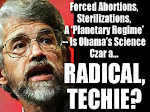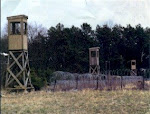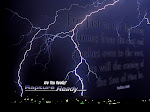 At the turn of the millennium, nuclear power appeared to be on its way out, like land-line telephones.But the nukes industry appears to be in vogue again, thanks in large part to fears of climate change."Global warming has definitely been a big help to us," said Don Hintz, vice president of the American Nuclear Society. Nuclear power plants produce no significant quantity of greenhouse gases, in contrast to coal-fired power plants, which account for 35 percent of U.S. carbon dioxide emissions.France gets roughly 80 percent of its electricity from nuclear and is said to have the cleanest air in the industrialized world, according to coverage of the topic by CBS News' "60 Minutes."Politicians and, ironically, some environmentalists have been calling for new nuclear reactors. In September, the Nuclear Regulatory Commission (NRC) received its first application in 30 years for a license to build a new plant, and there are about 20 more applications in the pipeline.The International Atomic Energy Agency recently forecasted that the current global nuclear capacity of 370 gigawatts will grow by 20 to 80 percent in the next two decades.However, some feel this so-called "nuclear renaissance" is based on false promises."We've known for a decade that nuclear power plants are the worst route to go to solve climate change," said Jim Riccio, nuclear policy analyst for Greenpeace.The nuclear industry has in the past been plagued by cost overruns and construction delays, Riccio said. Whatever good more nuclear plants could bring to the environment will come too late and at too high a cost."A dollar invested in renewable energy will go seven to 10 times farther towards reducing greenhouse gases," Riccio told LiveScience.
At the turn of the millennium, nuclear power appeared to be on its way out, like land-line telephones.But the nukes industry appears to be in vogue again, thanks in large part to fears of climate change."Global warming has definitely been a big help to us," said Don Hintz, vice president of the American Nuclear Society. Nuclear power plants produce no significant quantity of greenhouse gases, in contrast to coal-fired power plants, which account for 35 percent of U.S. carbon dioxide emissions.France gets roughly 80 percent of its electricity from nuclear and is said to have the cleanest air in the industrialized world, according to coverage of the topic by CBS News' "60 Minutes."Politicians and, ironically, some environmentalists have been calling for new nuclear reactors. In September, the Nuclear Regulatory Commission (NRC) received its first application in 30 years for a license to build a new plant, and there are about 20 more applications in the pipeline.The International Atomic Energy Agency recently forecasted that the current global nuclear capacity of 370 gigawatts will grow by 20 to 80 percent in the next two decades.However, some feel this so-called "nuclear renaissance" is based on false promises."We've known for a decade that nuclear power plants are the worst route to go to solve climate change," said Jim Riccio, nuclear policy analyst for Greenpeace.The nuclear industry has in the past been plagued by cost overruns and construction delays, Riccio said. Whatever good more nuclear plants could bring to the environment will come too late and at too high a cost."A dollar invested in renewable energy will go seven to 10 times farther towards reducing greenhouse gases," Riccio told LiveScience.Debate shift
The battle for and against nuclear power in the United States has been ongoing for decades, becoming especially heated after the accidents at Three Mile Island in 1979 and Chernobyl in 1986.The main concerns have been the threat of an accidental radiation leak and the lack of long-lasting disposal sites for radioactive waste.But in the past five years, the debate has shifted in light of new fears over global warming.According to recent figures from the Nuclear Energy Institute (NEI), 103 commercial nuclear plants in the United States generate nearly 75 percent of all emission-free electricity, which includes renewable technologies and hydroelectric power plants."We're supportive of wind and other renewable energies," but addressing climate change will likely require some fraction of nuclear power, Hintz said.In terms of radioactive waste, the United States has more than 50,000 tons of spent nuclear fuel from nuclear reactors.Although this constitutes a small fraction of the nearly 2 billion tons of carbon dioxide emitted per year from the nation's coal-fired plants, most of this highly radioactive waste is stored temporarily in aboveground sites, where it could contaminate groundwater or be used as a terrorist target.
There are hopes for a cleaner nuclear future: Fusion reactors-in which nuclei are combined- have the potential to provide almost limitless energy without all the toxic waste associated with traditional fission reactors.However, despite continued efforts, fusion power is still far from a reality."We really don't have time to chase around this Holy Grail," Riccio said.
Politically born again
The NEI estimates that current nuclear power costs less than 2 cents per kilowatt-hour, cheaper than coal-generated power. However, Riccio said this price does not include huge debts leftover from earlier construction."The first 75 reactors in the United States had $100 billion in cost overruns." Riccio said.The nuclear industry is hoping to avoid some of the problems that arose in the past with the help of the 2005 Energy Policy Act.The 2005 legislation offers billions of dollars in incentives to the industry to start new construction. It also allows reactor builders to apply for a combined operating license, which covers construction and operation.Before, builders needed two separate licenses, a fact that left certain finished reactors unused for years.
"The beauty of [the new licensing] is that all delays will be at the front end before you spend billions of dollars," Hintz said.If all goes smoothly, the NRC licenses will be awarded in three to five years and the first reactors will go on-line around 2015, Hintz said.
As in the days of Noah....






















































































.bmp)

























.bmp)